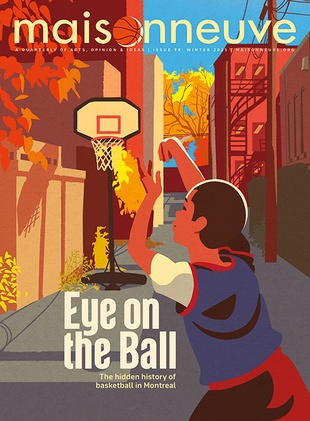The Book Room
Reviews of new books by Jason Guriel, Shani Mootoo, Christine Estima, and Lee Lai.
Fan Mail: A Guide to What We Love, Loathe, and Mourn
Jason Guriel’s new book is the methodical work of a true fan. Fan Mail (Véhicule), is a series of essays divided into three sections: “Love,” “Loathe” and “Mourn,” which, Guriel explains, are the fan’s three primary experiences. In “Love,” Guriel delineates what he enjoys about works such as Brian De Palma’s thriller Dressed to Kill—problematic yet daring, in his view—and why he is a self proclaimed “super fan” of Orson Welles’ niche Christmas movie, Mr. Arkadin. In “Loathe,” Guriel’s most memorable dispatch is “Bob Dylan’s Nobel Peace Prize” where he hilariously argues that the honour was undeserved. The last section, “Mourn,” is significantly shorter than the previous two. In it, Guriel succinctly eulogizes figures he admired, like his former boss, the late poet and scholar Rishma Dunlop. “Mourn” invites readers to see what made these figures special to him and grieve with him. Guriel’s passionate opinions, as he states, may ruffle feathers. Ultimately, this book provides a window into those obsessively moved by the world around them, emphasizing the ways in which our obscure fixations shape who we are. —Houda Kerkadi
Starry Starry Night
When her parents return from Ireland, where her father has been completing medical school, to Trinidad, six-year-old Anju Ghoshal’s life is upended. Raised by her grandparents, Anju grew accustomed to their household of unfiltered expression and unconditional love. Now, she must adjust to an environment where she learns that appeasing others, her “new” parents especially, ensures her safety.
In Starry Starry Night (Book*hug), Shani Mootoo transports the reader into Anju’s mind. Her narration combines childhood bluntness with a startling astuteness and clarity of thought. The reader accompanies Anju as she navigates her role in her family, cultivates creative and intellectual passions, and gradually deepens her self-awareness. Through Anju, Mootoo also provides intimate insight into 1960s Trinidad, a nation verging on gaining independence from colonialism. National dialogues about the country’s post-colonial future, and issues of race and class, filter into family conversations. Anju’s descriptions of the country’s physical and built environment complement these conversations, strengthening the sense of place, a backdrop for Mootoo’s explorations of loss, trauma, familial strife and belonging. Poignant and at times heartbreaking, Starry Starry Night is a gripping autofiction that prompts deep reflection on the delicacy of childhood. —Joel Sawmadal
Letters to Kafka
1939. The Butcher of Prague questions a Czech rebel. Are you writing propaganda for the resistance? Have you been married to Jews? How well did you know Franz Kafka? So begins Christine Estima’s Letters to Kafka (House of Anansi), a luminous novel of charged defiance and potent desire, highlighting the extraordinary, trailblazing life of real-world journalist Milena Jesenská, whose story would be cut short in a concentration camp five years later. 1919, Vienna. Jesenská, a fiercely independent twenty-three-year-old, is trapped in a joyless marriage and longs for a creative outlet. A chance encounter with Franz Kafka offers the opportunity to translate his short story “The Stoker.” Their formal correspondence quickly transfigures into a romantic, propulsive connection—invigorating both of their staid existences.
Estima’s interwar Vienna is brimming with creative energy: artists, critics, revolutionaries and hangers-on exchange wry gossip in gloomy cafés. While the emotive, highly stylised prose can initially feel overstuffed and imprecise, it builds to a rewardingly layered, compulsive rhythm. Both Kafka and Jesenská are well realised as doomed lovers, intoxicated by each other’s rich internal worlds, too stubborn and strong-willed to totally give themselves over. Jesenská in particular is rendered with love and wit. The novel’s success is that it does not characterize her life as a tragedy, but a triumph—celebrating her innate, playful resistance in the face of oppression. —Josh Milton-Bell
Cannon
In Cannon (Drawn and Quarterly), cartoonist Lee Lai captures the creation of a nervous breakdown. Lucy, a Chinese cook who hails from Lennoxville, Quebec, and lives in Montreal, is jokingly nicknamed Cannon because she embodies a calm and stoic presence to her best friend Trish and her coworkers. Cannon makes every effort to keep it together, from running herself into a foot injury to listening to mindfulness tapes religiously. The book builds to Cannon’s breaking point—these same tapes caption the panels depicting her destroying the restaurant. But what makes these scenes impactful isn’t Cannon finally smashing up plates—previewed at the start of the book—it’s the complex intersecting stressors, identities and events that Cannon tries to shoulder throughout the story, slowly building pressure until she snaps. Lai uses different techniques to depict these pressures, from overlaying speech bubbles to show Cannon getting cut off by her best friend, to depicting microaggressions from Cannon’s white peers that feel so true to life, they could make any East Asian reader shudder with recognition. Cannon’s stoicism, eventual emotional release, and the unexpected support she experiences are a reminder that it’s important to not be so strong all the time. —Alice Boyle





